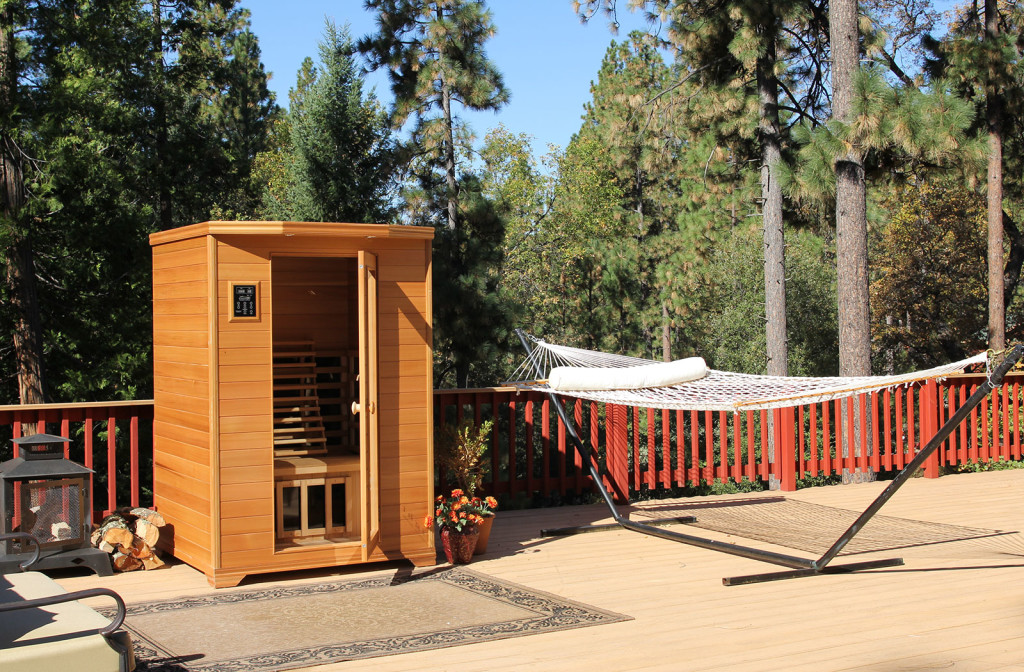
Why Heat Shock Proteins are Important
How Infrared Sauna Use Can Boost Longevity, Strengthen Immunity, and Supercharge Recovery
📍 Introduction: Why Heat Shock Proteins Matter So Much
If you’ve ever worked out until you were drenched in sweat, sat in a sauna until your skin tingled, or powered through a long run on a hot day, you’ve already activated one of your body’s most powerful repair systems — heat shock proteins (HSPs).
Heat shock proteins are your cellular frontline defense:
They protect against damage, repair stressed tissues, and strengthen your resilience to nearly every kind of physical and environmental stress.
Raising your core body temperature — through exercise, sauna use, or steam — doesn’t just burn calories. It simulates a low-grade fever, mobilizing your immune system and boosting your body’s internal repair mechanisms.
This is the fascinating part: When you “stress” your body using controlled heat (not dangerously, but intentionally), it doesn’t break down — it adapts. It builds better cells. It prepares for future stress. And that transformation happens with the help of HSPs.
In this guide, you’ll learn:
What heat shock proteins are and what they do
Why inducing heat stress may extend your life
How sauna use mimics exercise and improves recovery
How HSPs benefit brain health, immunity, heart function, and more
Why infrared saunas are uniquely positioned to help you unlock these benefits
And how to use sauna sessions strategically for long-term health gains
By the end, you’ll understand why HSPs are one of the most exciting discoveries in longevity science — and why an infrared sauna may be the most accessible way to harness them.
What Are Heat Shock Proteins?
Heat shock proteins (HSPs) are a class of proteins your body produces when it encounters stress — particularly heat stress. They’re sometimes called “molecular chaperones” because their job is to escort other proteins into proper shape and function.
Heat shock proteins protect and repair your body at the cellular level:
They help fold new proteins, refold misfolded ones, and prevent damaged proteins from clumping together — a key process in preventing disease and supporting recovery.
In simpler terms: HSPs are your body’s emergency response team for cellular health.
What Triggers Heat Shock Protein Production?
Your body ramps up HSP production in response to:
Exercise (especially intense or prolonged activity)
Heat exposure (like sauna use or hot baths)
Fasting or calorie restriction
Illness or infection
Cold shock (as in cryotherapy)
Each of these stressors induces a mild, controlled form of hardship that trains your body to become more resilient. This concept is known as hormesis — a biological phenomenon where a little stress makes you stronger.
Sauna Use and HSP Production
When you sit in a far infrared sauna, your body undergoes a subtle but powerful transformation. Your core body temperature increases — typically to around 101°F or higher — mimicking a mild fever. This triggers your cells to begin producing HSPs.
Far infrared heat is the ideal stimulus for HSP production:
Because it penetrates deep into tissues without overheating the skin or air around you, it allows longer, more comfortable sessions — ideal for maximizing heat shock protein response.
In clinical studies, sauna sessions lasting 15–30 minutes have been shown to elevate HSP levels by as much as 50% or more, with effects lasting for several days.
Longevity, Immunity, and Anti-Aging Benefits
So why does this matter? Because heat shock proteins help extend your healthspan — the number of years you live in good health, free from chronic disease.
Heat shock proteins slow cellular aging:
By helping maintain protein integrity and supporting detoxification pathways, HSPs reduce the accumulation of cellular damage linked to aging and disease.
HSPs also activate longevity pathways involving:
FoxO transcription factors (linked to stress resistance)
SIRT1 and NAD+ pathways (important in energy metabolism)
Autophagy (the body’s way of cleaning out damaged cells)
Together, these pathways help reduce inflammation, improve mitochondrial function, and even protect your brain from age-related decline.
Athletic Performance, Endurance, and Recovery
Athletes are increasingly using heat therapy to boost their training and recovery. That’s because heat shock proteins help muscles recover faster after stress, reduce oxidative damage, and increase plasma volume — which improves endurance.
Heat stress improves athletic output:
In one study, athletes who used a sauna after workouts saw a 32% increase in endurance after just three weeks.
Additional performance-related benefits of sauna-induced HSPs include:
Improved oxygen delivery to muscles
Faster removal of lactic acid and waste products
More efficient mitochondrial energy production
Enhanced muscle regrowth after injury
Brain Health, Mood, and Neurogenesis
One of the most exciting areas of research involves the effect of HSPs and sauna therapy on the brain.
Regular sauna use is associated with reduced risk of dementia and Alzheimer’s disease:
In a long-term study from Finland, men who used a sauna 4–7 times per week had a 66% lower risk of dementia compared to those who used it once per week.
This is likely due to a combination of factors:
Increased production of brain-derived neurotrophic factor (BDNF)
Improved cerebral blood flow
Reduced inflammation and oxidative stress
Elevated levels of norepinephrine and prolactin, which support focus, memory, and neuroplasticity
HSPs vs. Cold Shock Proteins
Cold exposure (like ice baths or cryotherapy) also triggers stress proteins — known as cold shock proteins. These have their own unique benefits, such as reducing inflammation, improving metabolic efficiency, and enhancing fat loss.
Contrast therapy — alternating between heat and cold — may maximize benefits:
By using both sauna and cold plunge, you activate complementary cellular responses that improve cardiovascular, immune, and nervous system function.
Still, heat remains the superior stimulus for HSP production.
Infrared Sauna vs. Traditional Sauna
Traditional saunas rely on steam or heated rocks to raise air temperature, which can make it difficult to tolerate long sessions. Infrared saunas, by contrast, heat the body directly — allowing a more comfortable and sustained exposure.
Far infrared saunas make HSP stimulation easier and more accessible:
You can stay in longer, sweat more effectively, and reach optimal core temperature without feeling overheated.
Key advantages:
Lower ambient temperature (110°F–140°F)
Deeper tissue penetration
More efficient detoxification
Enhanced relaxation and parasympathetic response
How Often Should You Use a Sauna for HSP Benefits?
Clinical research suggests that 3 to 5 sessions per week yields the best results, especially when sessions last 20–30 minutes at a temperature of at least 130°F.
Consistency is key:
The more regularly you expose your body to mild heat stress, the more resilient and adaptive your cells become.
Pairing sauna use with:
A healthy diet
Moderate exercise
Hydration and electrolyte balance
Sleep and recovery routines
…will maximize benefits across the board.
The Takeaway: HSPs Are Your Cellular Superpower
We can’t avoid stress — but we can train our bodies to become stronger, more resilient, and more adaptable in the face of it.
Heat shock proteins are nature’s built-in repair crew:
They restore cellular balance, increase longevity, and help your body recover faster — making infrared sauna therapy one of the most powerful tools for total-body health.
If you’re looking for a safe, proven way to feel younger, think clearer, and recover faster — it’s time to embrace the heat.
✅ Conclusion: Heat Your Body, Heal Your Cells
Now you understand — heat shock proteins are much more than just a biological curiosity. They’re a natural, powerful response system that kicks in when your body needs help. Whether you’re trying to build muscle, boost mental clarity, reduce chronic inflammation, or simply live longer with less pain, HSPs play a central role.
Regular infrared sauna use is one of the safest, easiest, and most enjoyable ways to activate HSPs:
It simulates the benefits of intense exercise, improves cardiovascular output, stimulates new brain cell growth, and strengthens your body’s ability to recover and resist disease.
And best of all, it doesn’t require hours at the gym or strict dietary changes. Just 20–40 minutes, a few times a week, inside a far infrared sauna.
If you want to improve your performance, your focus, your stress tolerance — and maybe even extend your life — it’s time to turn up the heat.
Because inside that sweat… is science.



